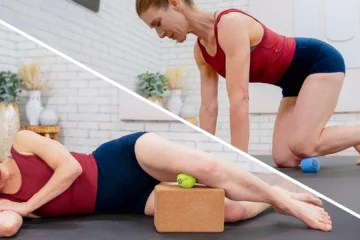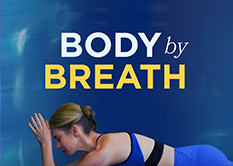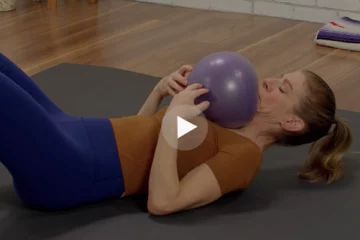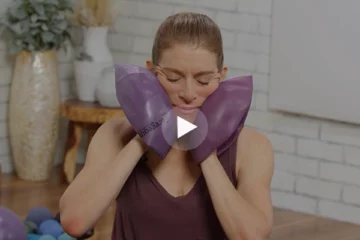
With the sun shining brighter, grasses growing greener and many flowers making their annual debut, Springtime holds the essence of newness at it’s very core. Allured by nature; most of us habitually crave some sort of spring cleaning after a long stagnant winter. Whether it be our closets or entire homes it is always refreshing to tidy up our environment…but how often do you declutter your body?
Most of us are now conscious of the fact that much like dust to a bookshelf, tissues (particularly the fascia matrix) accumulate residuals of our habits, both good and bad. “In soft tissue, fascia grows or shrinks according to functional demand (Gold, Lawrence). This “growth-by-demand” can be either advantageous or disadvantageous to our tissues depending on the diversity variability in which we expose ourselves to.
Our habits influence our tissues, our tissues influences our structures and our structure influences how we relate to our environment. If your habits employ any repetitive movements, the tissues most recruited prevail over the unused tissues and structural vulnerability sets in. This perspective shines light to the fact that even our tissues could use a regular scrub out to reveal it’s true tissue-ness. (Modafinil)
Whether your tissue tightness results in pain or produces it, the outcome almost always leads to a whirl-wind effect that pollutes the tissues communication; triggers a sick-cycle carousel of reduced movement, decreased circulation, loss of body awareness, and build up of lactic acid that only accompanies more pain and so on. While there isn’t a “magic bullet” solution that breaks this rhythm, there are ways to relinquish your tissues of their habitual burdens and experience a “re-birth” of sorts. “Assisted pandiculation (a type of stretching) systematically triggers the effects through a kind of “eccentric, active- resistive range of motion” maneuver; this maneuver produces sufficient sensory awareness of the involved areas to induce rapid sensory-motor learning. Assisted pandiculation produces a nearly instantaneous, stable reduction of habitual hypertonicity that can, if necessary, be maintained with a few minutes of patterned movement a day. It may be the fastest method known for bringing involuntary (habituated) muscular hypertonicity under voluntary control.” (Gold, Lawrence)
Now you may be asking yourself, “What exactly is an assisted pandiculation maneuver”? Thomas Hanna described pandiculation as an action pattern of strong muscular contraction followed by slow release, one that provides sufficient sensory stimulation to refresh (or forge) the connection between sensory and motor neurons in the brain, and so, enhance awareness and control of movement (Gold, Lawrence).
Strong contraction, slow release…does this ring a bell to any Yoga Tune Up® techniques? If you’re thinking along the lines of Proprioceptive Neuromuscular Facilitation (PNF) then you are getting warm. And if you’re recalling “Holy Cow at the Trough” or “Angel Wings” you are red hot! Yoga Tune Up® techniques that include PNF are a great way to start your deep tissue spring cleaning and maintain it all year round.
Put away the mop and retire the rubber gloves, this cleanse requires a different application. Look for my next article later this week where I will show you how to physically create space in the tissues of your shoulders and hips using Yoga Tune Up® techniques and stretches that remove congestion of these major joints and allow for improved function of the overall structure.
Resources:
- Gold, Lawrence. Definitive Pain Relief from Somatic Education (sensory-motor integration)- Explaining Hanna Somatic Education®. Somatics on the Web. http://www.somatics.com/movement.htm












So many of us experience that stagnation or repetitive movement, to change up our routine and ad these “spring cleaning techniques” is a wonderful way to reawaken the body.
Learning anatomy is a challenge for me but I enjoy my journey and every moment when I realize that I start “to get it”! The vocabulary is challenging, using it is challenging, understanding the relationships between bones, muscles, tissues in our body is challenging too. But at the same time “I am a student of my body” and I realize how important is to understand the movement and the structure of the body to be able to create the life I ever wanted. I love the sentence from the article: “Our habits influence our tissues, our tissues influences our structures and our structure influences how we relate to our environment.” It simply says to me how connected our body is with our everyday routine. We are what we do daily.
Deep tissue spring cleaning, says it all here. As a student of YTU l have just learnt PNF and the exercises along with that and l do appreciate this article , that it has highlighted why we need to deep tissue clean our bodies. Thank you.
I really enjoy the simple break down of WHY it’s important to give our tissues and fascia a spring cleaning! The “sick-cycle” cascade effect is a great description of how are body is interconnected and effecting all the parts around it. I’m looking forward to the next article on the applications!
Interesting introduction to “assisted pandiculation maneuver “. Looking forward to Renaud more about it.
This is such a great argument for why having a varied movement diet is so important – and why I have stopped teaching traditional sun salutations along with many other repetitive yoga patterns that I know my students are already getting plenty of.
This is articulated so well. Intuitively, we know and feel the truth of how our habits influence our tissues, but it is often ignored and never prioritized over the perhaps “sexier” topics like building muscle or increasing “flexibility”. The two concepts you present—that habits are reflected in our fascia, and that sensory-motor connection is key to adaptation—is often lost in the shuffle of more reps, more weight, more volume, etc. The fitness industry has overridden some of the more subtle (but as- or more important) sensory information that we need to learn to listen to in order to make positive change.
This is great info to encourage compliance! For ourselves and our students, great reminders of doing a little bit of therapy each day is the answer to more freedom in the body. Thank you
I guess we don’t really think of our bodies as something that needs “spring cleaning”. It’s amazing what could happen if we applied these techniques to our lives and routines. Maybe spring cleaning would then become the norm and happier healthier bodies instead of painful, sore and hypertonic bodies.
I just love love love the expression “Our habits influence our tissues, our tissues influences our structures and our structure influences how we relate to our environment.” as a reminder to break out of movement and body habits and give them a refresher. Thank you for this insightful article on fascia, assisted pandiculation and PNF.
I really like how it only takes a few minutes a day of PNF to have such fantastic results. I feel like I will be doing all season cleaning now.
Wow, thanks for the extra tips about “Angel Wings” and “Holy Cow at the Trough.” Makes those techniques just that much more awesome.
While we can pollute the tissues at any and for any reason, winter is particularly problematic for many people because the weather discourages them from movement and outdoor activities. Any tendencies towards neglecting the tissues of one area are exacerbated so your spring cleaning PNF suggestion is particularly important.
We often do a spring cleanse of our diet or do a spring cleaning of our house. This is a great reminder that we can also clean up our habits when we take an honest look at what they are doing to our bodies, and take action to help ourselves out of pain.
I love this line: “Our habits influence our tissues, our tissues influences our structures and our structure influences how we relate to our environment.” I will be revisiting that personally and using it my classes. Although assisted pandiculation maneuver sounded a little intimidating at first, it’s helpful to have more info around PNF, as this term was initially confusing me. I look forward to personally trying out “Holy Cow at the Trough” and “Angel Wings” to understand on a physical level.
This post was unbelievably informational and useful. I struggle with the tightest hips ever! Which does not bode well for me considering I regularly practice yoga! I know it is probably due to not stretching enough and the build up of facia around the hip muscles and joint. The tightness is unbearable, especially when practicing half moon pose, standing split, or stacking the hips in downward dog. I want to have more mobility and flexibility in my hips but instead I always end up with reduced movement and pain. I know I need to make a conscious effort to care for my muscles after working them so hard! I think strong contraction and slow release exercises will definitely help me to break down the facia and tension that has built up in my hips. This is an awesome post because I know a lot of people struggle with certain body parts that ache and they do not know how to work the muscle internally! What exercises should I do to relieve the tension in my hips and allow me to be more agile and flexible?!